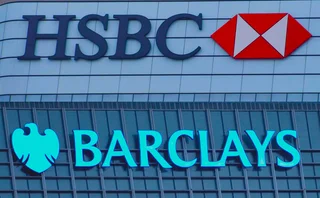
Barclays to fall in line with derivatives reporting practice

Barclays will change its reporting for derivatives worth hundreds of billions of pounds in its 2009 annual report, in order to comply with International Financial Reporting Standard (IFRS) 7 - a European accounting standard amended in March last year.
An official in Barclays' reporting function declines to comment on whether the bank supports the rule, but criticises the effort involved: "All I'll say is that it's a lot of work."
Other large dealers have already voluntarily reported their derivatives in line with the new rules.
IFRS 7 requires all financial instruments reported at fair value to be separated into a three-level hierarchy, in order to show investors and analysts how liquid the instruments are and how they are valued. It mirrors a similar standard already in use in the US, which European banks other than Barclays had based their voluntary disclosures on in advance of IFRS 7. Level 1 is for instruments valued using market prices, while level 3 is for instruments where the value is derived wholly from internal models. Level 2 is for instruments that require a mix of market prices and modelling, and is the bucket into which the vast majority of derivatives fall.
Unlike its peers, however, Barclays combined levels 1 and 2 in a single, undifferentiated pool for its 2008 report - referring to them as "valuations with observable inputs".
It could be interpreted incorrectly, but if anyone saw it, they would then have contacted investor relations
"Obviously, the focus is on level 3 - which is why you have to provide more detail on what has gone through your profit and loss in that category, because those are the numbers analysts want to see. That's what we thought the focus should be on - valuations with unobservable inputs," says the Barclays official.
But that decision created a discrepancy between the Barclays accounts and those of other banks. While Royal Bank of Scotland (RBS), for example, reported £800 million of derivatives in the first column of its fair-value disclosure table - denoting level 1 assets in its 2008 annual report - the first column of the corresponding Barclays table reported derivatives worth £970 billion, around 98.5% of all derivatives assets at the bank. That led one regulator - misreading the Barclays approach - to privately castigate the bank for what she saw as dishonest reporting.
"It's a joke to report any of these derivatives at level 1 - none of our banks would be allowed to do it," she told Risk.
The official in Barclays' financial reporting function denies the bank had sought to mislead, but accepts the difference between its disclosures and those of other banks could have been misinterpreted. "It could be interpreted incorrectly, but if anyone saw it, they would then have contacted investor relations where an explanation would have been readily available," he says.
Only users who have a paid subscription or are part of a corporate subscription are able to print or copy content.
To access these options, along with all other subscription benefits, please contact info@risk.net or view our subscription options here: http://subscriptions.risk.net/subscribe
You are currently unable to print this content. Please contact info@risk.net to find out more.
You are currently unable to copy this content. Please contact info@risk.net to find out more.
Copyright Infopro Digital Limited. All rights reserved.
As outlined in our terms and conditions, https://www.infopro-digital.com/terms-and-conditions/subscriptions/ (point 2.4), printing is limited to a single copy.
If you would like to purchase additional rights please email info@risk.net
Copyright Infopro Digital Limited. All rights reserved.
You may share this content using our article tools. As outlined in our terms and conditions, https://www.infopro-digital.com/terms-and-conditions/subscriptions/ (clause 2.4), an Authorised User may only make one copy of the materials for their own personal use. You must also comply with the restrictions in clause 2.5.
If you would like to purchase additional rights please email info@risk.net
More on Regulation
Barr defends easing of Basel III endgame proposal
Fed’s top regulator says he will stay and finish the package, is comfortable with capital impact
Bank of England to review UK clearing rules
Broader collateral set and greater margin transparency could be adopted from Emir 3.0, but not active accounts requirement
The wisdom of Oz? Why Australia is phasing out AT1s
Analysts think Australian banks will transition smoothly, but other countries unlikely to follow
EU trade repository matching disrupted by Emir overhaul
Some say problem affecting derivatives reporting has been resolved, but others find it persists
Barclays and HSBC opt for FRTB internal models
However, UK pair unlikely to chase approval in time for Basel III go-live in January 2026
Foreign banks want level playing field in US Basel III redraft
IHCs say capital charges for op risk and inter-affiliate trades out of line with US-based peers
CFTC’s Mersinger wants new rules for vertical silos
Republican commissioner shares Democrats’ concerns about combined FCMs and clearing houses
Adapting FRTB strategies across Apac markets
As Apac banks face FRTB deadlines, MSCI explores the insights from early adopters that can help them align with requirements








